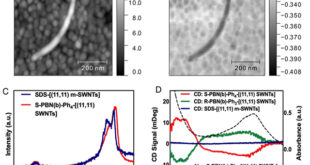Significance Statement
The use of cobalt based alloys has been highly attributed to their excellent wear, corrosion and oxidation resistance over a wide range of temperatures namely for highly demanding applications. Among them, the Co-Cr-W alloy, commonly called Stellite®, is the most adopted in industrial applications which include protecting other parts against wear, in form of cavitation, erosion, oxidation and corrosion. Various techniques are used to deposit the Stellite layer onto the surface but each technique is seen to be responsible for variations of coatings microstructures and consequently the coat properties. High Velocity Oxygen Fuel is mainly used to deposit the Stellite coatings. A greater share of the present research only focuses on the coating corrosion resistance in highly demanding conditions, forgoing the wear properties of the same.
Šárka Houdková and colleagues from the New Technology Research Centre at University of West Bohemia in Czech Republic, proposed a study that focused on establishing the simple dependencies in the differences between the phase composition and properties of High Velocity Oxygen Fuel as sprayed, High Velocity Oxygen Fuel sprayed and laser annealed and laser clad in Stellite coatings. They aimed at using the energy of the laser to modify the High Velocity Oxygen Fuel sprayed coating microstructure to deliberately increase the rate and compare the microstructure, phase composition and wear properties to the High velocity oxygen fuel as sprayed coating and laser-clad one. Their work is now published in the peer-reviewed journal, Surface & Coatings Technology.
The research team started with their experiment by depositing the thermally-sprayed coating onto carbon steel substrates which had been grit blasted by alumina. The Stellite 6 cobalt-based alloy feedstock powder with a specific nominal composition and gas atomized was used for spraying the High velocity oxygen fuel. The samples obtained were then laser remelted to approximately half of the coatings thickness using two sets of processing parameters. As the re-melting took place, the coatings were simultaneously characterized as well as the microstructure and chemical composition of the feedstock powder and coatings evaluated.
The authors observed that depending on the used deposition technology, the microstructure of coating varied namely in terms of grain size and phase composition. The X-ray diffraction analyses in the wear track revealed that the strain-induced face centered cubic structure-to-hexagonal close packed structure transformation was taking place during wear of laser remelted High Velocity Oxygen Fuel sprayed coatings. They also observed that the difference of the phase composition, grain size and strain-induced face centered cubic structure-to-hexagonal close packed structure transformation was responsible for differences in the sliding wear behavior. Eventually, they concluded that used depositionand post treatment procedure influenced the microstructure, phase composition and consequently the sliding wear properties of Stellite 6 coatings.
Based on their findings, the laser-post treatment can therefore be recommended to not only improve the corrosion resistance through elimination of porosity, but also for increasing the sliding wear resistance of the High Velocity Oxygen Fuel sprayed coatings. When compared with the laser clad coating, the laser remelted coatings have been observed to attain significantly higher wear resistance and in specific application, can benefit from the lower heat input into the coated parts.
Reference
Šárka Houdková, Zdenek Pala, Eva Smazalová, Marek Vostřák and Zdeněk Česánek. Microstructure and sliding wear properties of HVOF sprayed, laser remelted and laser clad Stellite 6 coatings. Surface & Coatings Technology volume 318 (2017) pages 129–141.
Go To Surface & Coatings Technology Advances in Engineering Advances in Engineering features breaking research judged by Advances in Engineering advisory team to be of key importance in the Engineering field. Papers are selected from over 10,000 published each week from most peer reviewed journals.
Advances in Engineering Advances in Engineering features breaking research judged by Advances in Engineering advisory team to be of key importance in the Engineering field. Papers are selected from over 10,000 published each week from most peer reviewed journals.

